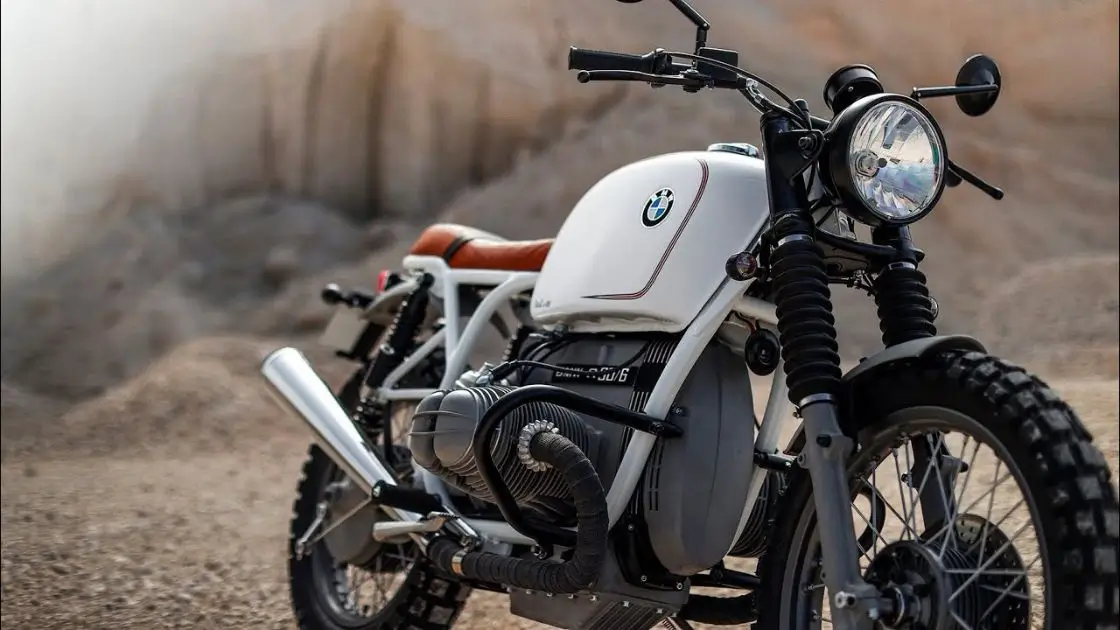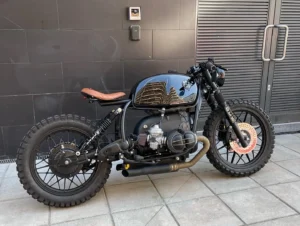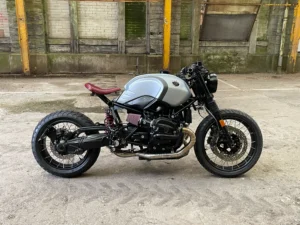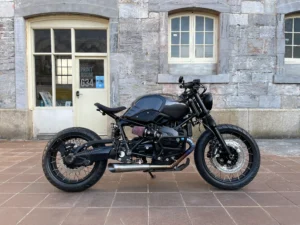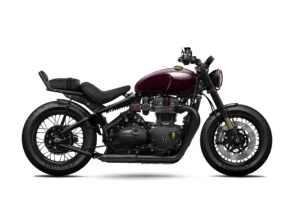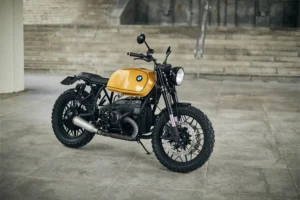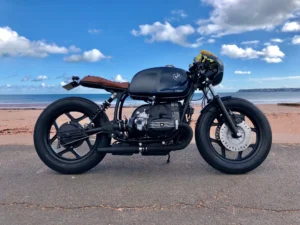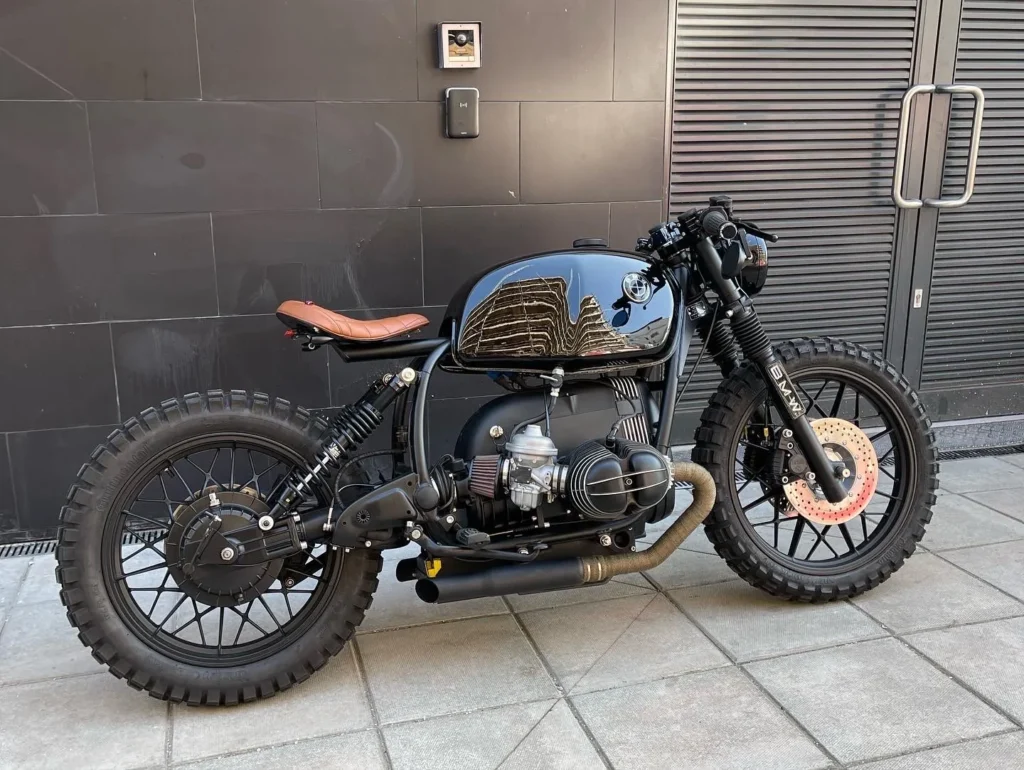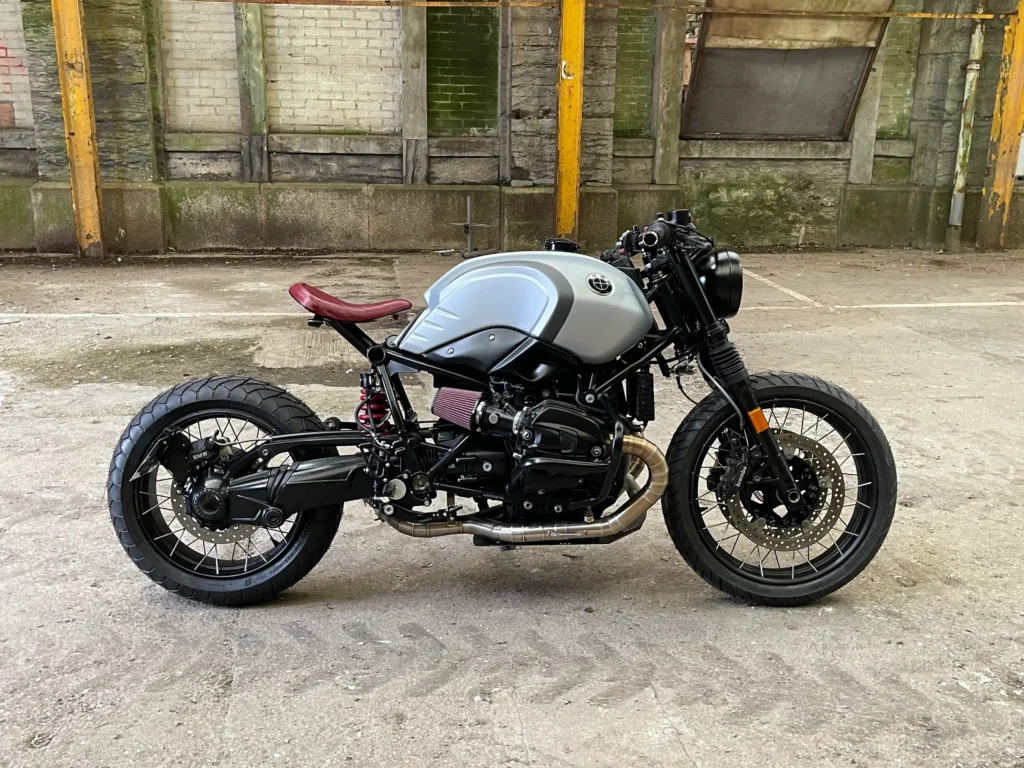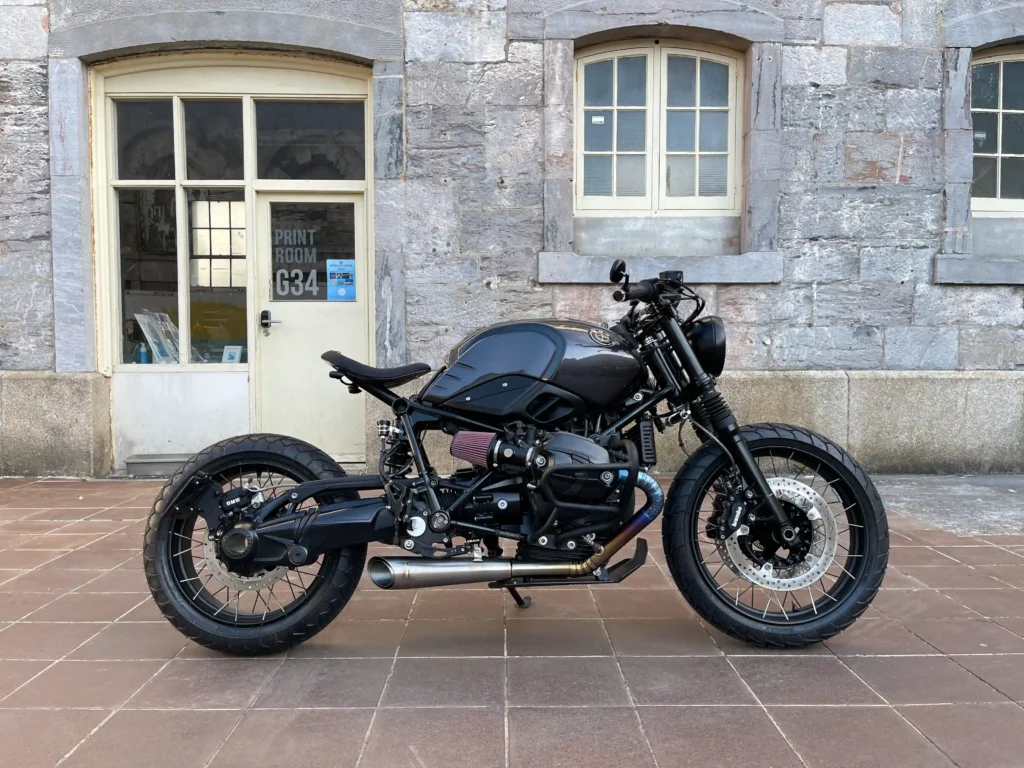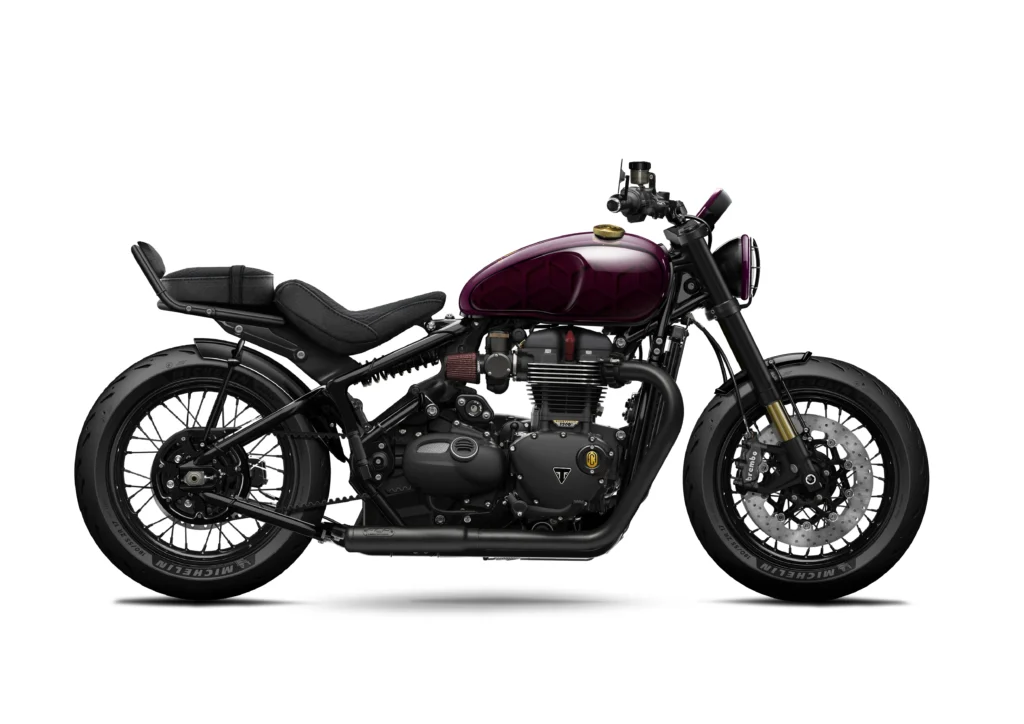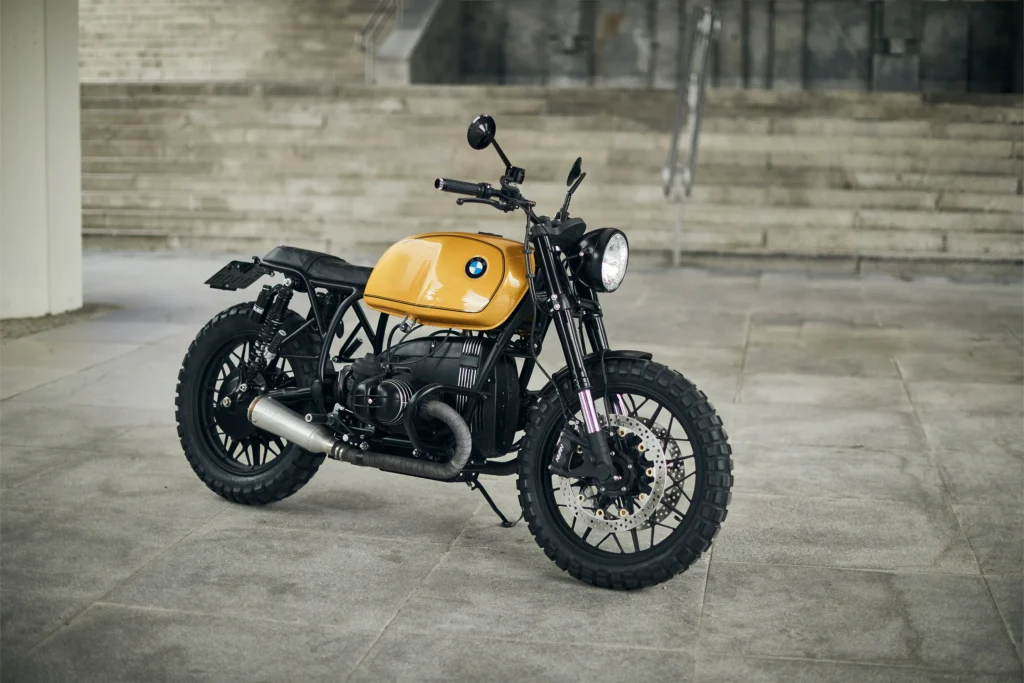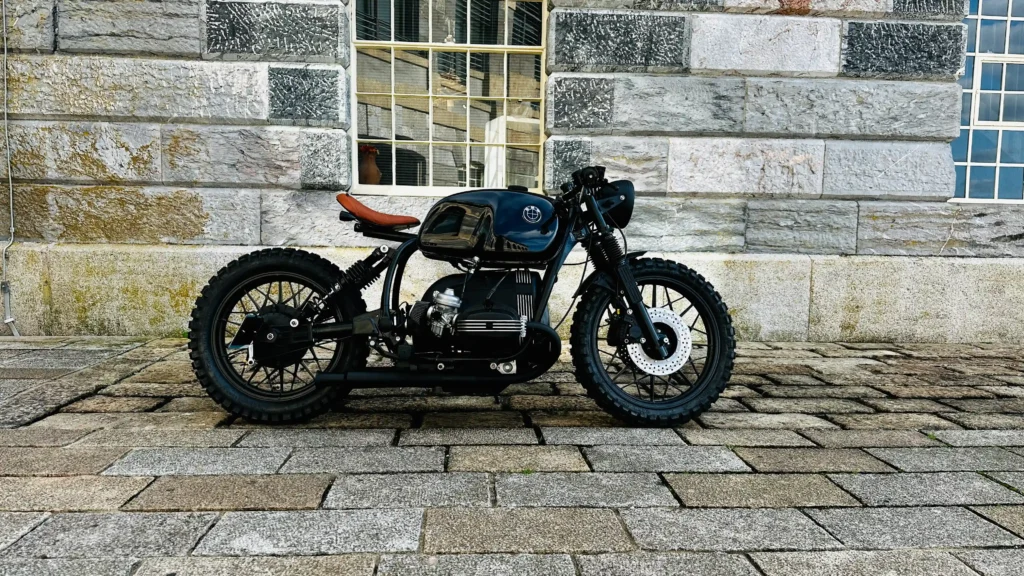Table of Contents
ToggleIf you love classic motorcycles, you might know about the BMW R90 café racer. This bike is not just a machine; it’s history on wheels. It’s stylish and a dream to ride. The BMW R90 first appeared in the 1970s, a time when café racers were very popular. Riders wanted bikes built for speed and good looks. The result? A simple, fast motorcycle that looks cool and sleek.
So why choose the BMW R90? This model is known for its strong build, famous design, and great power. Many riders, like me, think it’s the perfect café racer. The R90 has a classic engine and a vintage feel. It has everything a café racer fan could want. Plus, BMW makes reliable bikes that last, making it ideal for a custom ride that’s both tough and eye-catching.
In this article, we will look at the BMW R90 café racer from every angle. We’ll start with a bit of history, explain what makes a bike a café racer, and show you how to turn a BMW R90 into a custom café masterpiece. Along the way, we’ll check out famous builds by top custom shops, talk about keeping it in good shape, and point you to resources and communities that keep café racer culture alive.
History of the BMW R90
The BMW R90 has a long history. It was first made in 1973 as part of BMW’s famous “/6” series. This series gave riders more power, better handling, and improved reliability. The R90 came with a 900cc boxer engine, which made it one of the strongest motorcycles of that time. For its era, the R90 was fast, smooth, and set a new standard in motorcycles.
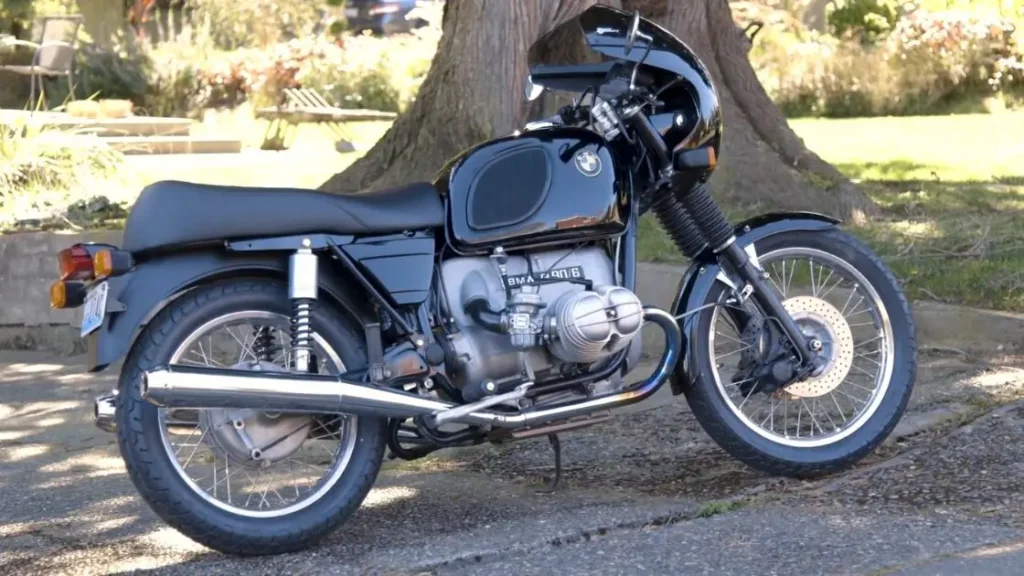
A special model in this line was the BMW R90S. This bike stood out. It wasn’t just another ride; it made a statement. With its stylish look, black and silver paint, and “smoked” fairing, the R90S became an icon. It could reach a top speed of 125 mph, which was very fast back then. The R90S even won big races, proving that BMW could make bikes that were not only reliable but thrilling.
Today, the BMW R90 is a popular choice for building café racers. Part of the appeal is nostalgia. This model shows off a golden era of BMW motorcycles. Riders admire its classic look, while builders love its simple frame and strong boxer engine. The R90’s sturdy frame and design make it easy to modify. Its original stripped-down look also fits perfectly with café racer style.
In short, the BMW R90 holds a special place in motorcycle history. Its strong engine, classic style, and solid build make it a top choice for riders and builders alike. When you turn an R90 into a café racer, you’re not just building a bike; you’re keeping a piece of motorcycle history alive.
Specifications of the BMW R90
The BMW R90 was built with performance, reliability, and a timeless style that still appeals to riders and builders today. Known for its smooth and powerful boxer engine, the R90 set a high standard for motorcycles in the 1970s. Here’s a closer look at the key specifications that make this bike a classic and a popular choice for café racer projects.
| Specification | Details |
| Model Variants | BMW R90/6 and BMW R90S |
| Engine | 898 cc, air-cooled, boxer twin |
| Power Output | R90/6: 60 horsepower, R90S: 67 horsepower |
| Torque | 56 lb-ft (76 Nm) at 5,500 rpm |
| Top Speed | R90/6: ~115 mph, R90S: ~125 mph |
| Compression Ratio | R90/6: 9.0:1, R90S: 9.5:1 |
| Fuel System | Bing carburetors (Dell’Orto on R90S) |
| Transmission | 5-speed manual gearbox |
| Clutch | Dry, single-plate |
| Frame | Steel tubular frame for added durability |
| Brakes (Front) | R90S: Dual disc, R90/6: Single disc |
| Brakes (Rear) | Drum brake |
| Suspension (Front) | Telescopic forks |
| Suspension (Rear) | Twin shock absorbers |
| Front Tire | 3.25-19 |
| Rear Tire | 4.00-18 |
| Fuel Tank Capacity | 6.3 gallons (including reserve) |
| Dry Weight | R90/6: 474 pounds (215 kg); R90S slightly heavier |
| Electrical System | 12V with Bosch alternator |
| Instrumentation | Analog speedometer, tachometer, fuel gauge |
| Exhaust | Dual exhaust with chrome mufflers |
The BMW R90’s specifications show why it was a standout motorcycle of its time. The powerful 898 cc boxer engine and high compression ratio give it a strong and steady performance. With dual front disc brakes on the R90S model and a solid steel frame, it was built for both speed and stability. The analog instruments, air-cooled engine, and classic dual exhaust add to its vintage charm, making it a true icon for café racer conversions.
The R90’s specs make it clear why it’s a favorite among café racer enthusiasts. Its mix of power, design, and durability provides a strong foundation for customization, allowing builders to create unique rides while keeping the essence of this legendary BMW model.
Transforming a BMW R90 into a Café Racer
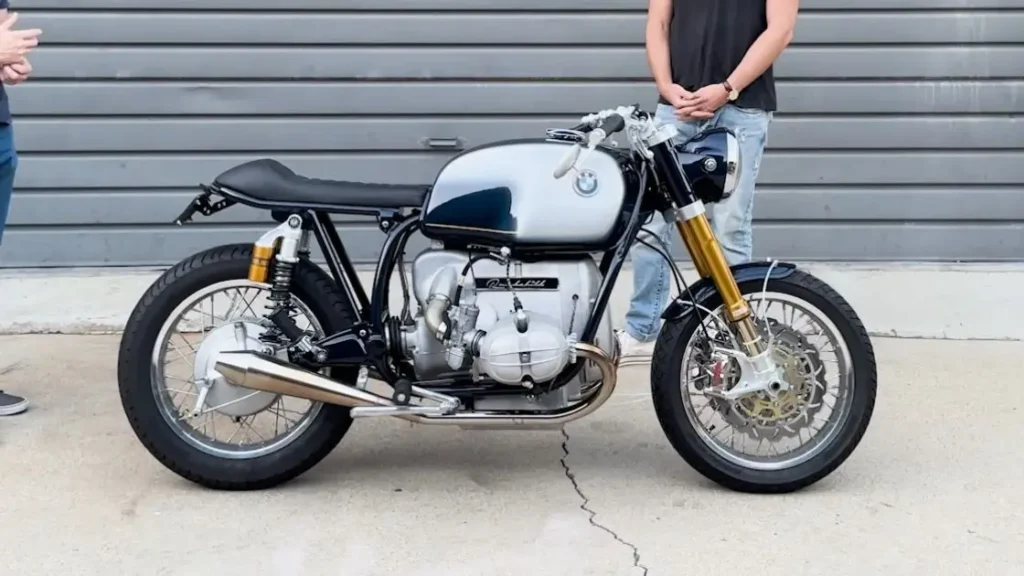
Turning a BMW R90 into a café racer is a project many motorcycle enthusiasts take on. This process involves changing parts of the bike to make it lighter, faster, and more stylish. The goal is to keep only the essentials and create a clean, classic look. Here’s a breakdown of the key steps involved.
Planning and Design
Before starting, it’s important to have a clear plan. Decide on the look and feel you want for your BMW R90 café racer. Search for design ideas, think about the modifications you’ll make, and set a budget. Planning is key to avoid unexpected expenses and keep the build focused.
Essential Modifications
There are a few main areas to focus on when transforming an R90 into a café racer:
- Aesthetic Modifications
- Fuel Tank: The fuel tank is a big part of a café racer’s look. Many builders replace the original tank with a sleeker, vintage-style tank that fits the café racer style.
- Seat and Tail Section: A café racer usually has a solo seat with a short tail section. Replacing the stock seat with a custom café racer seat gives the bike a more compact and sporty look.
- Handlebars: Low handlebars, often called “clip-ons,” help create a classic café racer feel. These handlebars are closer to the body, giving the rider a more forward-leaning position.
- Performance Enhancements
- Engine Tuning: The BMW R90 has a strong boxer engine, but some builders choose to tune or upgrade it for extra power. Simple adjustments can improve performance, making the bike faster and more responsive.
- Suspension Upgrades: To handle the road better, upgrading the suspension can make a big difference. Café racers need a firm, stable ride, and aftermarket shocks can help achieve that.
- Brakes: Improving the braking system is essential, especially with the added power and speed. High-quality brakes provide better control and safety, which is important for any café racer.
- Weight Reduction
- Removing unnecessary parts is a major part of the café racer style. Many builders strip down the bike to the basics. They might remove heavy parts or replace them with lighter materials. This process makes the bike faster and easier to handle, fitting the original café racer spirit.
Legal and Safety Considerations
When modifying a BMW R90, it’s important to check local laws. Some modifications, like lighting changes or removing mirrors, may not be legal in every area. Safety checks are also essential. Café racers are often used on public roads, so it’s crucial that the bike meets safety standards.
- Read More: [BMW R80 Cafe Racer | Ultimate Guide to Build & Customize]
- Read More: [BMW R100 Cafe Racer | Build & History [Step-by-Step Guide]
- Read More: [1981 BMW R100 Cafe Racer | Ultimate Guide to Custom Builds]
Notable BMW R90 Café Racer Builds
There are many impressive BMW R90 café racer builds that showcase creativity and skill. These custom builds highlight the potential of the R90 and serve as inspiration for anyone interested in creating their own. Here are a few standout examples:
Renard Speed Shop’s R90/6
Renard Speed Shop took the BMW R90/6 and turned it into a sleek, modern café racer. This build features a minimalist design with a focus on clean lines and high performance. The team replaced the original fuel tank with a custom aluminum tank that gives the bike a sharper look. They also upgraded the suspension and brakes for a smoother, more responsive ride.
What makes this build special is the balance between old and new. Renard kept the vintage feel of the R90 while adding modern elements. This approach keeps the bike true to its roots while improving its functionality.
Mandrill Garage’s 1976 R90/6
Mandrill Garage created a unique café racer from a 1976 BMW R90/6. They focused on giving the bike a raw, rugged style that stands out. This build features a custom seat, clip-on handlebars, and a redesigned tail section that captures the classic café racer look.
One notable change is the exhaust system. Mandrill Garage installed a custom exhaust that gives the bike a powerful sound and better performance. This build shows how you can blend style and substance by focusing on both looks and functionality.
Analog Motorcycles’ R90/6
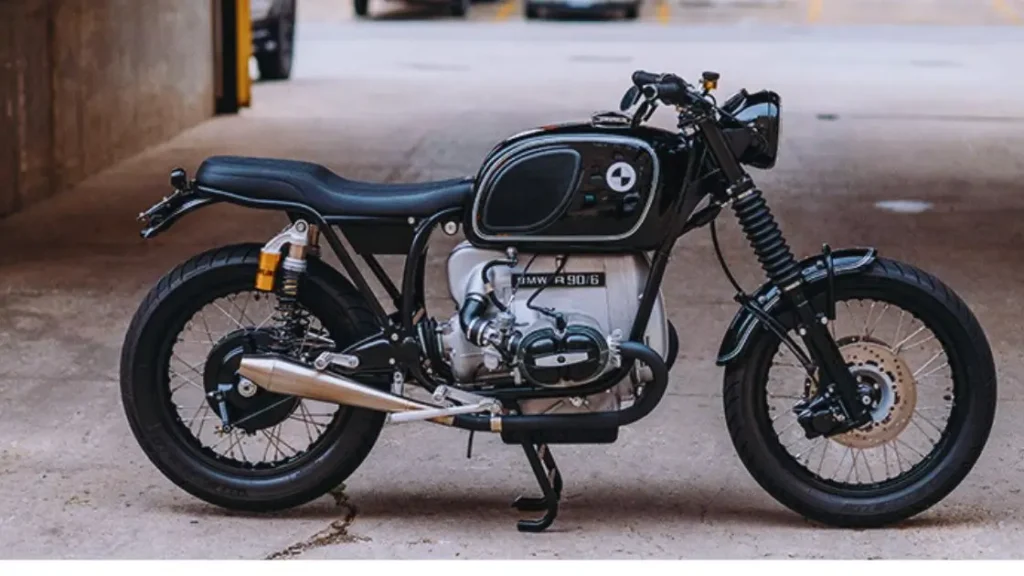
Image Source: analogmotorcycles
Analog Motorcycles took a classic R90/6 and modernized it with precision. They kept the bike’s frame simple but made several key upgrades to improve performance. Analog upgraded the engine, added new suspension, and installed high-quality brakes.
What makes this build stand out is its attention to detail. Analog used high-quality parts throughout, ensuring that every aspect of the bike works together seamlessly. This build is a great example of how thoughtful upgrades can bring out the best in a BMW R90 café racer.
Maintenance and Care for BMW R90 Café Racers
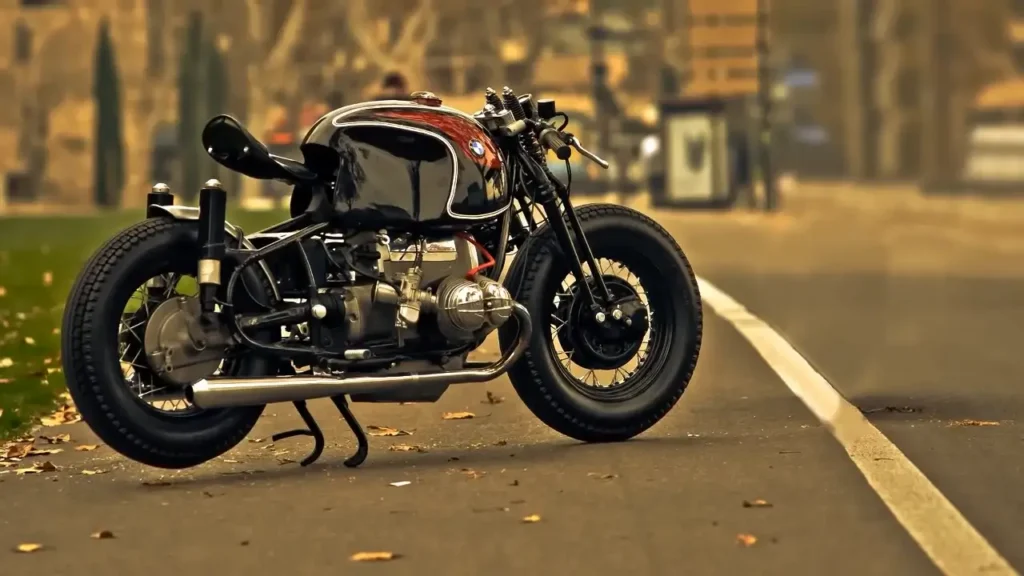
Keeping a BMW R90 café racer in good shape requires regular maintenance. Since many café racers are customized, they may need extra care to stay reliable and safe. Here are some basic maintenance steps to keep your bike running smoothly.
Regular Maintenance
- Oil Changes: Change the oil every few thousand miles. Clean oil helps keep the engine running well and prevents wear.
- Air Filter: Check the air filter regularly. A clean air filter improves engine performance and fuel efficiency. Replace it if it’s clogged or damaged.
- Brake Pads: Inspect the brake pads often, especially if you have upgraded brakes. Worn-out pads reduce stopping power and should be replaced immediately.
- Chain Tension: Keep the chain at the right tension. A loose or tight chain can damage the bike and make riding unsafe. Lubricate the chain regularly to prevent rust.
Custom Parts and Components
Customized café racers may have aftermarket parts, which need special attention:
- Suspension: Aftermarket suspension parts may wear differently. Check them regularly to ensure a smooth ride and safe handling.
- Battery: Many café racers have smaller or relocated batteries. Make sure the battery is secure and charged. A weak battery can lead to starting issues.
- Electrical Wiring: Custom wiring setups can sometimes come loose. Check all connections, especially if you’ve modified the lights or other electronics.
Common Issues and Troubleshooting
BMW R90 café racers, especially older models, may face certain issues:
- Fuel System: Old fuel lines can crack over time. Replace any cracked or leaking lines to avoid fuel issues.
- Exhaust Leaks: Modified exhaust systems can sometimes leak. Check for leaks if you hear unusual sounds or notice a drop in performance.
- Carburetor Tuning: Many café racers use custom carburetors. If the bike runs rough, it may need a carburetor adjustment.
Regular care and attention can keep your BMW R90 café racer performing well. Staying on top of these tasks helps prevent bigger problems and ensures a reliable ride.
Community and Resources
Building and maintaining a BMW R90 café racer is a rewarding journey. Many people are passionate about this style of motorcycle, and there are great resources to help you learn, connect, and find parts.
Online Communities
- Motorcycle Forums: There are online forums where café racer fans share advice, builds, and stories. Popular ones include ADVrider and BMWMOA. These forums cover everything from technical help to design ideas.
- Social Media Groups: Many café racer enthusiasts join groups on Facebook and Instagram. These groups are a great way to find inspiration, ask questions, and connect with others who share your interests.
Parts and Accessories
Finding the right parts is key for customizing a BMW R90. There are many websites and shops that sell café racer parts, from fuel tanks to custom seats and handlebars. Look for reliable suppliers to ensure quality and fit.
For all your café racer needs, check out our blog. We provide a range of resources, from guides on custom builds to tips on maintenance. Our site is updated regularly with articles, recommendations, and expert advice on building and caring for BMW R90 café racers.
Events and Gatherings
Café racer culture is celebrated at events worldwide. Some popular events include the Distinguished Gentleman’s Ride and the Handbuilt Motorcycle Show. Attending events like these is a great way to see other custom builds, meet fellow enthusiasts, and learn new techniques.
Conclusion
The BMW R90 is a classic motorcycle with strong appeal for café racer fans. Its timeless look, powerful engine, and solid build make it great for customization. Turning a BMW R90 into a café racer blends style, speed, and history.
Building a café racer takes planning, skill, and dedication. Every custom modification, from handlebars to the exhaust, adds to the bike’s character. Whether you want better performance or a vintage look, the result is a unique motorcycle that reflects your style.
Taking care of your café racer keeps it safe and fun to ride. Regular maintenance and checking custom parts help keep it in top shape. Joining the café racer community offers support, ideas, and resources.
FAQs
What are the key differences between the BMW R90/6 and R90S models?
The BMW R90/6 and R90S both have a 900cc boxer engine. The R90S is faster, with 67 horsepower, while the R90/6 has 60 horsepower. The R90S also comes with two front disc brakes, a sportier fairing, and unique styling.
Is it necessary to upgrade the suspension when converting a BMW R90 into a café racer?
Yes, upgrading the suspension helps with handling and ride comfort. This is especially true if the old suspension is worn out. New shocks and forks can make a big difference.
Can I revert my BMW R90 café racer back to its original form after customization?
Yes, you can return the bike to its original condition if you keep the original parts and use bolt-on modifications. Major changes, though, can make it harder to go back to stock.
What are some common challenges faced during the café racer conversion of a BMW R90?
Common issues include fitting custom parts like seats and tanks, ensuring aftermarket parts match, and keeping the bike’s frame strong. Good planning and advice from experienced builders can help avoid these problems.
Are there specific legal considerations to keep in mind when modifying a BMW R90 into a café racer?
Yes, you should follow local laws for vehicle changes. This means making sure parts like lights and exhausts meet legal standards so the bike stays roadworthy.

